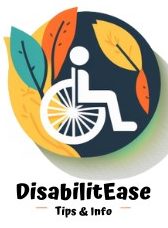You’ll notice the difference immediately when your child uses the right writing aid tools. As a parent, you’re not just buying a plastic grip—you’re investing in your child’s confidence and skill development. The 2025 lineup features ergonomic designs that work with your child’s natural hand position rather than against it. Want to know which tools can transform those frustrating homework sessions into productive learning moments? The answer lies in these five remarkable innovations.
Table of Contents
Ergonomic Pencil Grips for Kids Handwriting Training
Struggling young writers will find relief with these specially designed pencil grips that solve the common problem of improper finger positioning. Extric’s ergonomic grips work for both left and right-handed children, reducing hand fatigue during writing sessions.
The breathable hollow design prevents sweaty fingers while maintaining correct posture. Each pack includes six vibrant grips that make handwriting practice more engaging for preschoolers developing essential skills.
With a 4.5-star rating from 79 customers, parents and teachers report significant improvement in children’s handwriting. Though some users note occasional discomfort, these lightweight grips (just 1.13 ounces) remain a top choice for teaching proper pencil control.
Best For: Children ages 3-8 who struggle with proper pencil grip technique or need support developing foundational handwriting skills.
Pros:
- Ergonomic design works for both left and right-handed children, preventing hand fatigue during extended writing practice
- Breathable hollow structure prevents sweaty fingers while maintaining proper finger positioning
- Colorful 6-pack design makes handwriting practice more engaging and fun for young learners
Cons:
- Some users report discomfort with prolonged use, suggesting it may not fit all hand sizes equally
- Limited to pencil use only, not compatible with other writing instruments like markers or crayons
- Relatively new product (released April 2024) with limited long-term durability feedback
Pencil Grips for Kids Handwriting Aid (3 Pack)
Young writers developing proper pencil technique will find DMFLY’s ergonomic pencil grips invaluable for their handwriting journey. These eco-friendly silicone grips come in a convenient 3-pack with blue, orange, and green options to keep your child engaged.
You’ll appreciate the hollow ventilation design that prevents sweaty fingers during long writing sessions. The ergonomic shape positions thumb and index finger correctly, reducing pressure and improving posture—potentially lowering myopia risk.
With a 4.4-star rating from over 4,500 reviews, these versatile grips work equally well for left and right-handed users, including adults with arthritis or tremors.
Best For: Young children learning to write, students developing proper pencil grip technique, and adults with arthritis or hand tremors who need writing assistance.
Pros:
- Ergonomic design promotes correct finger placement and posture while writing
- Breathable hollow design prevents sweaty hands during extended writing sessions
- Versatile for both left and right-handed users of various ages
Cons:
- May not fit all pencil sizes or writing instruments uniformly
- Some children might require time to adjust to the grip’s positioning
- Limited color options (only blue, orange, and green) compared to other brands
KOABBIT Pencil Grippers for Kids (3 Pack Handwriting Aid Tools)
Little hands that are just beginning to explore the world of writing will find a helpful companion in KOABBIT Pencil Grippers. Designed for 2-4 year olds and therapist-recommended, these soft silicone grippers fit most writing tools and work for both left and right-handed children.
You’ll notice improved grip and control within days as your child develops proper writing posture and fine motor skills. The set includes three grippers—perfect for keeping one at home, school, and on-the-go.
While they don’t fit jumbo pencils and some left-handed users report sizing issues, most parents see their children confidently tracing letters and eventually holding pencils correctly without assistance.
Best For: Parents of 2-4 year old children who are beginning to learn how to write and need help developing proper pencil grip and writing posture.
Pros:
- Three-pack design allows for convenient placement in different locations (home, school, backpack)
- Made from soft, durable silicone material that’s comfortable for small hands
- Therapist-recommended tool that shows noticeable improvement in grip and writing control within days
Cons:
- Not compatible with jumbo toddler pencils, limiting use with some age-appropriate writing tools
- Some left-handed users report issues with fit and effectiveness
- A small percentage of children may struggle to use the grippers effectively, requiring additional patience and practice
The Original OT SportWriter Handwriting Aid (2 Pack)
Children who struggle with proper pencil grip will find the Original OT SportWriter Handwriting Aid an ideal solution for developing essential writing skills. This USA-made tool promotes the correct tripod grip, reducing hand fatigue and writing anxiety.
Designed by a licensed COTA, the SportWriter features comfortable cotton stretch knit and satin cord construction that’s non-toxic and durable. It’s particularly effective for kindergarteners and special education students aged 4 and up.
With a 4.4-star rating from 84 reviews, this handwriting aid has proven its effectiveness in classrooms and clinics worldwide. You’ll appreciate how this simple tool can dramatically improve your child’s handwriting legibility.
Best For: Children ages 4 and up who struggle with proper pencil grip, have writing anxiety, or need help developing a correct tripod grip for improved handwriting legibility.
Pros:
- Handmade in the USA from non-toxic, comfortable materials including cotton stretch knit and satin cord
- Designed by a licensed COTA specifically to reduce hand fatigue and promote proper finger positioning
- Effective tool used in classrooms and clinics worldwide with a strong 4.4-star customer rating
Cons:
- May not be comfortable for all children as individual experiences vary
- Requires hand washing and air drying for cleaning, which is less convenient than machine-washable alternatives
- Some users may need time to adjust to the aid before seeing improvement in their handwriting
JuneLsy Pencil Grips for Kids Handwriting (3 PCS)
Developing proper handwriting form begins with the right grip, and the JuneLsy Pencil Grips provide an ergonomic solution for small hands struggling with pencil control. These hollow, non-slip grips are designed for children ages 3-7, preventing finger cocooning and middle finger cramping with regular use.
You’ll appreciate how they accommodate natural hand contours while alleviating strain during extended writing sessions. Their textured surface enhances precision, and they fit various writing tools. Cleaning is simple—just use soap and water.
With 15,066 ratings averaging 4.4 stars, these durable grips have proven effective for improving handwriting at an affordable price.
Best For: Children ages 3-7 who are developing their handwriting skills and need assistance with proper pencil grip technique.
Pros:
- Ergonomic hollow design prevents finger fatigue and cramping during extended writing sessions
- Non-slip material with textured surface enhances precision and control while writing
- Universal compatibility with various writing tools including pencils, pens, and styluses
Cons:
- May be too small for older children or adults with larger hands
- Requires consistent use to see improvement in handwriting technique
- Limited to 3 pieces per package, which may not be sufficient for classroom or family use
Factors to Consider When Choosing Aid Writing Tools for Kids
When choosing writing tools for your child, you’ll need to match the design to their age and guarantee it fits their hand size properly. You should verify the materials are non-toxic and that the grip mechanism effectively addresses your child’s specific handwriting challenges. Don’t forget to check if the tool works for both left and right-handed children, especially if your child is left-handed.
Age-Appropriate Design
Selecting the right writing aid tools requires careful consideration of your child’s specific developmental stage and physical characteristics. Tools designed for older children often prove too bulky or complex for 2-4 year olds, potentially frustrating their early writing attempts.
For preschoolers (ages 3-7), look for writing aids specifically engineered for smaller hands with ergonomic grips that follow natural hand contours. These properly designed tools prevent finger cramping and promote a relaxed grip—crucial for beginners developing foundational skills.
Pay attention to features like hollow ventilation, which provides breathability during longer writing sessions for younger users. Remember, age-appropriate writing tools don’t just make writing more comfortable; they help establish proper technique from the start, setting your child up for writing success throughout their educational journey.
Hand Size Compatibility
Three key dimensions of hand size compatibility determine whether a writing tool will enhance or hinder your child’s writing development. First, consider the tool’s circumference—it should fit comfortably in your child’s palm without requiring excessive stretching or constricting their grip. Second, evaluate the tool’s length, which affects balance and control during writing sessions. Finally, assess the weight distribution, as top-heavy tools can cause fatigue in small hands.
Look for writing aids specifically designed for your child’s age range (typically labeled for ages 3-7) with ergonomic features that prevent finger cocooning and middle finger cramping. Flexible or adjustable tools offer the best long-term value as they’ll accommodate your child’s growth. When the tool fits properly, your child can focus on developing writing skills rather than struggling with discomfort.
Material Safety
Almost every writing aid your child handles presents potential safety concerns that require careful evaluation. Look for products that are explicitly labeled non-toxic and free from harmful chemicals like BPA, phthalates, and lead that can affect your child’s health with repeated exposure.
When shopping, prioritize writing tools with ASTM and CPSIA certifications, which verify that manufacturers have met rigorous safety standards. These certifications aren’t just marketing—they’re your assurance that materials have been properly tested.
Choose writing aids made from durable, high-quality materials that won’t break down quickly with regular use. Additionally, consider how easily you can clean these tools. Since kids often use writing aids in different environments, select options that you can sanitize regularly to prevent bacterial buildup.
Grip Improvement Mechanism
Effective grip improvement mechanisms serve as vital foundations for your child’s writing development, particularly when they’re first learning proper penmanship techniques. Look for ergonomic designs that naturally position fingers correctly, reducing fatigue during longer writing sessions.
The best grip aids feature breathable or hollow designs that prevent sweating and discomfort, allowing your child to practice without interruption. Soft, durable materials enhance comfort while encouraging proper posture. If your child struggles with finger cocooning or middle finger cramping, specialized designs can address these specific issues.
When selecting a grip tool, make certain it accommodates both right-handed and left-handed users—this versatility is important if you’re uncertain of your child’s dominant hand or if multiple children will share the tool.
Left-Right Hand Suitability
Selecting writing tools that accommodate both left and right-handed children represents a key consideration often overlooked by parents. The best writing aids feature universal designs that adapt easily to either hand, ensuring proper finger placement and grip for all users.
Look for ergonomic pencil grips with asymmetrical features specifically designed to support the unique positioning of left-handed writers. These thoughtful designs prevent awkward hand postures that can lead to discomfort and poor writing habits.
Many therapist-recommended tools now offer explicit guidance for both hand orientations, facilitating correct writing posture regardless of dominance. By choosing tools that work effectively for either hand, you’ll create an inclusive learning environment where all children can develop proper technique and enjoy the writing process without unnecessary frustration.
Durability and Comfort
When investing in writing aids for children, durability and comfort should top your priority list. Look for tools made from high-quality plastic or silicone that can withstand daily use without breaking or losing their shape. These materials guarantee your investment lasts through countless homework assignments and creative writing sessions.
Choose ergonomically designed aids that follow your child’s natural hand contours, reducing strain during extended writing periods. Features like hollow ventilation prevent sweaty hands, while non-slip surfaces provide better control and stability. You’ll also want tools that are easy to clean to maintain hygiene standards.
The best writing aids offer universal compatibility with various pencils and pens, creating a snug fit that enhances your child’s grip and control while they develop proper writing techniques.
Frequently Asked Questions
At What Age Should Children Start Using Writing Aid Tools?
You can introduce your child to writing aid tools as early as age 5-6, when they’re developing basic writing skills. Start with simple tools and gradually advance as they gain confidence and proficiency.
Can Writing Aids Help Children With Diagnosed Learning Disabilities?
Yes, writing aids can greatly help your child with learning disabilities. They offer specialized support for dyslexia, ADHD, and other conditions through text-to-speech, dictation, and organizational features that accommodate different learning needs.
How Long Should Children Use Writing Aids Before Transitioning Off?
You’ll want to shift kids gradually based on their progress, not time. Watch for improved confidence and skills, then reduce dependency. They’ll show when they’re ready through independent writing success.
Are Digital Writing Tools More Effective Than Physical Handwriting Aids?
You’ll find both digital and physical aids have their place. Digital tools offer immediate feedback and engagement, while handwriting aids develop essential motor skills. For best results, incorporate both into your child’s writing development journey.
Do Writing Aids Improve Academic Performance Beyond Handwriting Skills?
Yes, writing aids boost your academic performance beyond handwriting. They’ll improve your reading comprehension, vocabulary, critical thinking, and communication abilities. You’ll also see benefits in organization, confidence, and overall learning outcomes.

Hi, my name is Eddie, I am a professional trainer specializing in the elderly population and I’m also a website designer. I love training in the gym, going to the beach, traveling, and having good food.
I combined my love for sport and website designing to make “DisabilitEase” whose purpose is to help elderly and disabled people live a more full and active life, have more fun, and enjoy their unique journey despite any disability.



